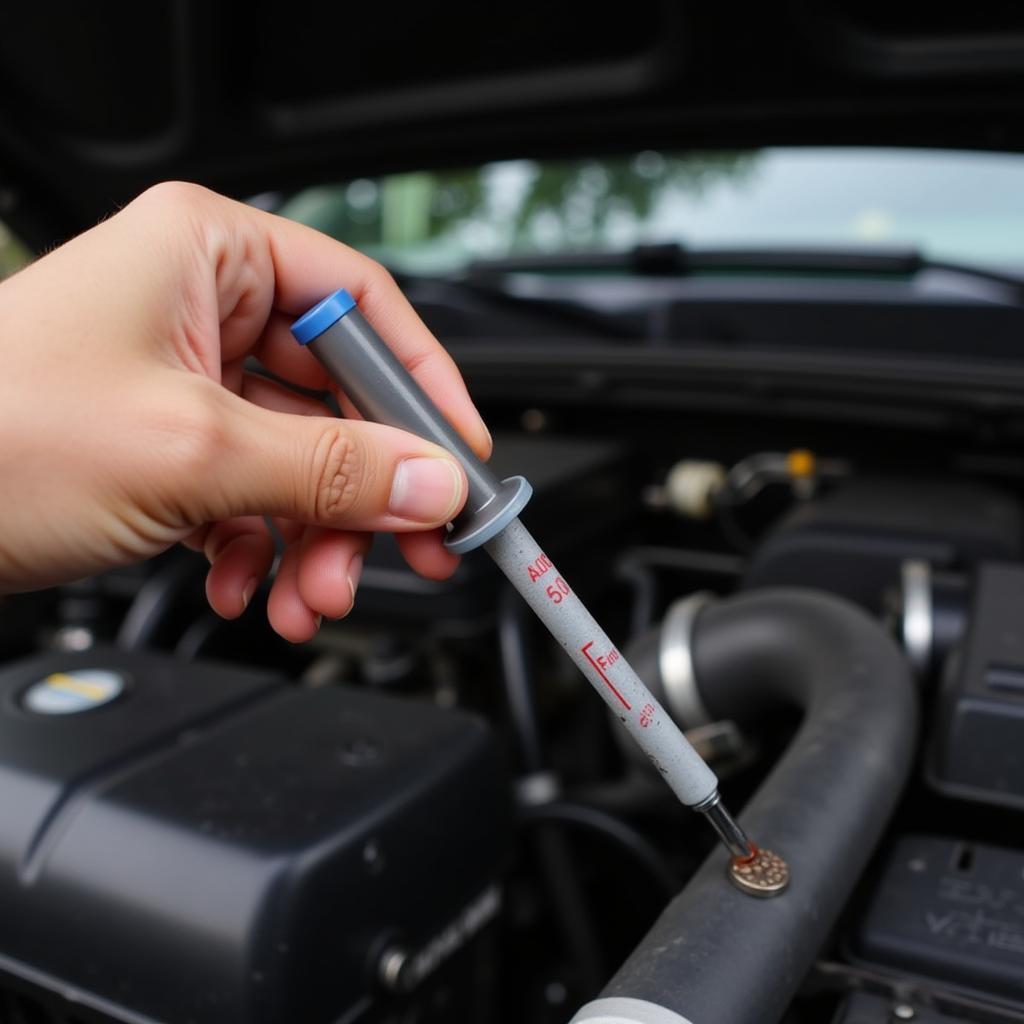Flaky paint on a car is a common problem that can be caused by a variety of factors, including age, weather, and improper maintenance. While it may seem like a minor issue, flaky paint can quickly deteriorate and lead to rust, which can weaken the structural integrity of your vehicle.
This guide will provide a comprehensive overview of how to fix flaky paint on a car. We’ll discuss the causes, symptoms, and different repair methods, so you can determine the best approach for your situation.
What Causes Flaky Paint on a Car?
Flaky paint is often a symptom of underlying problems. Here are some common causes:
- Age: Over time, paint can become brittle and crack due to exposure to UV rays, moisture, and temperature fluctuations. This can lead to flaking and peeling.
- Weather: Extreme temperatures and humidity can accelerate the deterioration of paint. Saltwater and road grime can also contribute to flaking.
- Improper Maintenance: Failure to wash your car regularly or use appropriate cleaning products can damage the paint and lead to flaking.
- Prior Repairs: Previous paint repairs, like touch-ups or repainting, may not be properly applied, leading to flaking in the future.
- Underlying Rust: Flaking paint often reveals rust underneath, indicating a more serious problem that needs to be addressed.
Symptoms of Flaky Paint
Here are some signs that your car’s paint is flaking:
- Visible Flakes: You may notice small pieces of paint peeling or flaking off the surface.
- Cracking: Tiny cracks or lines may appear in the paint, which can eventually lead to flaking.
- Bubbling: Small bubbles may form under the paint, indicating that moisture is trapped and causing it to lift.
- Discoloration: The paint may appear dull or faded in areas where it is flaking.
How to Fix Flaky Paint on a Car
The best way to fix flaky paint depends on the severity of the damage and your budget. Here are some common repair methods:
1. Touch-Ups (Minor Flaking)
For minor flaking, a touch-up paint pen or spray can can be used to cover up the affected area. Here’s how:
- Clean the area: Use a cleaning solution and microfiber cloth to remove dirt and debris from the affected area.
- Prepare the surface: Sand the area lightly with fine-grit sandpaper to create a smooth surface for the paint to adhere to.
- Apply touch-up paint: Follow the manufacturer’s instructions for the touch-up paint.
- Allow to dry: Let the paint dry completely before applying a clear coat, if necessary.
2. Sanding and Repainting (Moderate Flaking)
If the flaking is more extensive, sanding and repainting may be necessary. This method involves removing the damaged paint and applying a new coat.
- Sanding: Use progressively finer grades of sandpaper to smooth the surface. Start with coarse grit and work your way down to fine grit.
- Priming: Apply a primer to the sanded area to create a smooth, uniform surface for the paint to adhere to.
- Repainting: Apply a new coat of paint to the primed area. Make sure to match the existing paint color as closely as possible.
- Clear coat: Apply a clear coat to protect the paint from UV rays and other elements.
3. Professional Body Shop Repair (Severe Flaking)
For severe flaking or extensive damage, it is recommended to take your car to a professional body shop.
“A professional body shop will have the expertise and equipment to properly repair the damage, ensure a smooth finish, and prevent future issues,” says John Smith, a certified automotive technician with over 20 years of experience.
Body shops can handle a variety of repair methods, including:
- Full paint job: This involves sanding down the entire vehicle and applying a new coat of paint.
- Panel replacement: If the damage is too severe to repair, a panel may need to be replaced.
Prevent Flaky Paint
The best way to prevent flaky paint is to properly maintain your car. Here are some tips:
- Regular Washing: Wash your car regularly to remove dirt, grime, and salt.
- Waxing: Waxing your car provides a protective barrier against UV rays, moisture, and other elements.
- Avoid Harsh Chemicals: Do not use harsh chemicals or abrasive cleaners on your car’s paint.
- Park in the Shade: Whenever possible, park your car in the shade to protect it from direct sunlight.
- Address Rust Early: If you notice any rust, address it promptly to prevent it from spreading.
FAQ
Q: How much does it cost to fix flaky paint on a car?
A: The cost of fixing flaky paint can vary depending on the severity of the damage, the repair method chosen, and your location.
Q: How long does it take to fix flaky paint on a car?
A: The time required to fix flaky paint can range from a few hours for a minor touch-up to several days for a full paint job.
Q: Can I fix flaky paint myself?
A: You can attempt to fix minor flaking yourself using touch-up paint or sanding and repainting. However, for more extensive damage, it is recommended to seek professional help.
Q: Can I prevent flaky paint from coming back?
A: You can minimize the chances of flaky paint returning by properly maintaining your car and addressing any rust issues promptly.
Contact Us for Help!
If you are facing any problems with your car’s paint, please contact us at +1 (641) 206-8880 or visit our office at 500 N St Mary’s St, San Antonio, TX 78205, United States. We are here to help you keep your car looking its best.







Leave a Reply